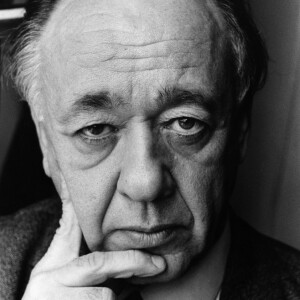
Found among the papers of the academic and writer Joseph O’Donoghue are some press clippings covering the Ionesco/Tynan controversy of 1958. In the history of British drama the debate between the supporters of Eugene Ionesco ( above), Romanian pioneer of the ‘ Theatre of the Absurd ‘on one side, and the defenders of the ‘ realist ‘ theatre proponent , Kenneth Tynan, on the other, that took place in the Arts pages of the Observerin June and July 1958, remains one of the more significant literary debates of the twentieth century, perhaps only rivalled by the Leavis—Snow altercation a few years later.
Essentially, Ionesco, the author of such classic ‘ absurdist’ pieces as ‘ The Bald Prima Donna ‘ and ‘ The Chairs’, argued that theatre should have nothing to do with the social and political issues that concerned the average man in the street. Such writers as Sartre, Osborne, Miller and Brecht were representatives of a ‘ left-wing conformism ‘ and offered nothing ‘ that one does not know already through books and political speeches ‘. Theatre should in contrast promote the artist’s aesthetic and philosophical perspectives, particularly as they reflected the absurdity and futility of existence. The critic should only be concerned with how successful the artist’s methods were in conveying his ideas to the audience.
Tynan’s vision of the theatre was demonstrably opposed to that of Ionesco. To him a play was only successful as art if it effectively reflected the social and political issues of the time. A play should not be an abstract philosophical debate on the absurdity of existence, but should engage with the audience’s experience of everyday life. To Tynan, politics was part of life in which ‘ even buying a packet of cigarettes was a political act ‘. He accused Ionesco of a sort of solipsism in which distortions of reality ( as in Cubism ) become more valid and important than ‘ the external world it is their proper function to interpret’. Continue reading
